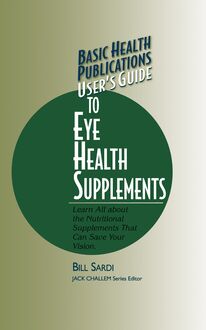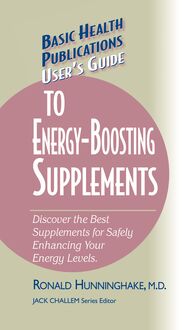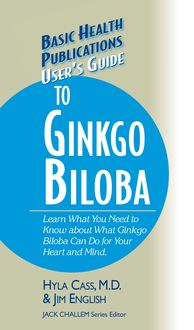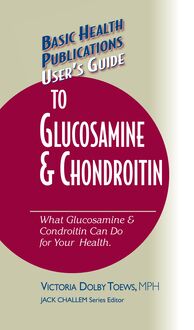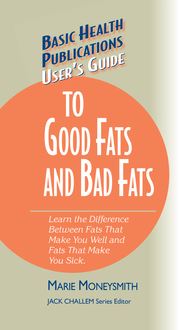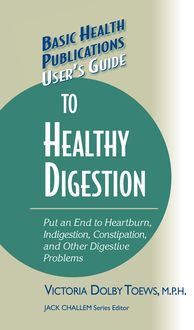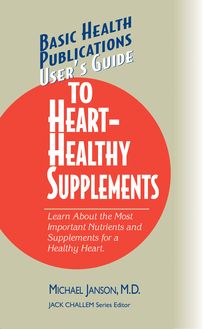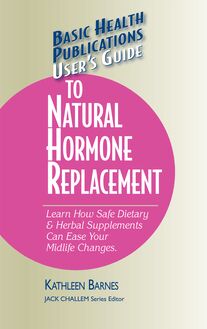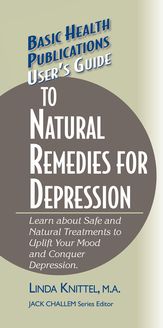-
 Univers
Univers
-
 Ebooks
Ebooks
-
 Livres audio
Livres audio
-
 Presse
Presse
-
 Podcasts
Podcasts
-
 BD
BD
-
 Documents
Documents
-
- Cours
- Révisions
- Ressources pédagogiques
- Sciences de l’éducation
- Manuels scolaires
- Langues
- Travaux de classe
- Annales de BEP
- Etudes supérieures
- Maternelle et primaire
- Fiches de lecture
- Orientation scolaire
- Méthodologie
- Corrigés de devoir
- Annales d’examens et concours
- Annales du bac
- Annales du brevet
- Rapports de stage
La lecture à portée de main
Vous pourrez modifier la taille du texte de cet ouvrage
Découvre YouScribe en t'inscrivant gratuitement
Je m'inscrisDécouvre YouScribe en t'inscrivant gratuitement
Je m'inscrisEn savoir plus
Vous pourrez modifier la taille du texte de cet ouvrage
En savoir plus

Description
Sujets
Informations
| Publié par | Turner Publishing Company |
| Date de parution | 01 janvier 2004 |
| Nombre de lectures | 0 |
| EAN13 | 9781591206743 |
| Langue | English |
Informations légales : prix de location à la page 0,0398€. Cette information est donnée uniquement à titre indicatif conformément à la législation en vigueur.
Extrait
The information contained in this book is based upon the research and personal and professional experiences of the author. It is not intended as a substitute for consulting with your physician or other healthcare provider. Any attempt to diagnose and treat an illness should be done under the direction of a healthcare professional.
The publisher does not advocate the use of any particular healthcare protocol but believes the information in this book should be available to the public. The publisher and author are not responsible for any adverse effects or consequences resulting from the use of the suggestions, preparations, or procedures discussed in this book. Should the reader have any questions concerning the appropriateness of any procedures or preparations mentioned, the author and the publisher strongly suggest consulting a professional healthcare advisor.
Series Editor: Jack Challem
Editor: Susan Andrews
Typesetter: Gary A. Rosenberg
Series Cover Designer: Mike Stromberg
Basic Health Publications User’s Guides are published by Basic Health Publications, Inc.
28812 Top of the World Drive
Laguna Beach, CA 92651
949-715-7327 • www.basichealthpub.com
Copyright © 2004 by Michael Janson, M.D.
ISBN 978-1-59120-674-3
All rights reserved. No part of this publication may be reproduced, stored in a retrieval system, or transmitted, in any form or by any means, electronic, mechanical, photocopying, recording, or otherwise, without the prior written consent of the copyright owner.
Printed in the United States of America
10 9 8 7 6 5 4 3 2
C ONTENTS
Introduction
1. Normal Heart Function
2. Abnormalities of the Heart
3. Risk Factors for Heart Disease
4. Basic Nutritional Supplements for the Heart
5. Advanced Nutritional Supplements for the Heart
6. Herbal Supplements for the Heart
7. A Comprehensive Heart-Treatment Program
8. Other Treatments for the Heart
9. Diet and Lifestyle to Protect the Heart
Conclusion
Selected References
Other Books and Resources
I NTRODUCTION
H eart disease (specifically arteriosclerotic heart disease, or ASHD) is the number-one killer in the United States and other developed countries. Quite often, sudden cardiac death from a heart attack is the first indicator that a problem exists, so it is important to take preventive measures before the first sign of a problem. Most of the time, heart disease is the result of poor lifestyle choices, such as smoking, excessive alcohol intake, poor diet, lack of exercise, and high stress levels. This is actually good news, because it means that it is something that you can influence by making the right choices.
When I was in my first year of college in 1962, I was asked to undergo a routine evaluation by a cardiologist because I had had a heart murmur all of my life. I had always been told that the murmur was “routine” or “functional,” and not significant for heart function. As it turned out, my prior evaluations were incorrect, and my heart murmur was indicative of a leaky valve that I had probably had since birth. Needless to say, this was quite a shock to both my parents and me.
At that time, the cardiac surgeon told my parents that he wanted to do surgery to replace the leaky valve that was causing the murmur. Although I had absolutely no symptoms, he said to them that if I did not have this done, I would likely have heart failure in ten to twenty years, when the heart muscle could no longer keep up with the increased burden created by the leak. He also urged me to give up any exercise, even though I was a very active teenager and participated in many sports.
We did not take his advice. However, it did stimulate my interest in heart health, and medicine as a career, and in later years my interest in alternatives to conventional treatments (and how to take better care of my heart). This personal interest has kept me aware of the most important developments in the management of heart disease for myself and my patients. While it is true that genetic makeup contributes to the development of heart disease, this is far less important than lifestyle choices over which you have a large measure of control.
Even if you have a family history of heart disease (or almost any other chronic, degenerative disease), do not feel that you are inevitably going to have the same problem. Extensive research shows that diet, exercise, stress, and many other influences play a role in maintaining a healthy heart or contributing to its decline, depending on the choices that we make. In addition, the scientific literature is quite clear that many dietary supplements are valuable as either complements to conventional care, or in many cases as substitutes for medications and even surgery.
CHAPTER 1
N ORMAL H EART F UNCTION
I n order to appreciate the value of dietary supplements for the heart, it is helpful to understand the basic structure and function of the heart. After all, your heart pumps all day every day of your life, and it cannot “take a breather” at any time, so it is well worth a few minutes to review how it does its work. However, it is not essential to understand how the heart works in order to benefit from the dietary supplements and other lifestyle changes presented later in the book. If you want to skip to the section on the valuable supplements for heart disease, you can always come back to the basics later.
Heart Anatomy and Function
The heart is a muscle much like any other muscle in your body, with some microscopic differences. This muscle, or myocardium, is a specialized sac with four interconnecting chambers. The right atrium and left atrium chambers receive blood that is coming back from the body and the lungs, respectively. Blood that has given up some of its oxygen to the tissues and picked up some waste products of metabolism comes into the right atrium from the vena cava, the largest vein in the body. From the lungs, blood that has picked up oxygen comes back to the left atrium through the pulmonary vein.
The left atrium then pumps some blood through a valve called the mitral valve into the left ventricle (although most of the blood actually passes through without the need for the pumping action, the atrial contraction does contribute significantly to the blood in the ventricle). The left ventricle then pumps oxygenated blood out through the aortic valve into the aorta, the largest artery, and then to the rest of the tissues and organs of the body (other than the lungs). While the left ventricle contracts (an event called “systole”—pronounced “ sis -tuh-lee”), blood is prevented from going back into the left atrium by the mitral valve. When this blood passes through the kidneys and liver, waste products and toxins are removed.
Blood that comes into the right atrium passes into the right ventricle through the tricuspid valve, and during systole the right ventricle contracts sending blood to the lungs through the pulmonary valve and the pulmonary artery. In the lungs, the blood picks up oxygen that you have breathed in, and delivers carbon dioxide to be exhaled when you breathe out.
Just past the aortic valve in the aorta are the openings for the coronary arteries that supply blood to the myocardium. During systole, the open aortic valve covers these coronary entrances, but when the valve closes during the resting phase of the cycle, called diastole (pronounced “die- ass -tuh-lee”), the blood in the aorta fills the coronaries. The two coronary openings lead to the right and left coronary arteries. The left main coronary artery immediately branches into two (the circumflex toward the back of the heart and the left anterior descending toward the front). They all then go on to have many branches that interconnect with each other and supply the entire myocardium, plus there is some supply to the inside of the heart directly from the blood in the chambers.
Myocardium
The muscle tissue of the heart, similar to other muscles but contracting independently and regularly.
The entire heart is covered by a connective tissue sac called the pericardium. The lining cells inside the heart are called the endocardium, and these cells also cover the heart valves.
Arteries and Veins
The arteries are the channels that supply blood from the heart to the tissues. The veins return blood to the heart. The arteries start with the aorta, and then branch out and become smaller until they become small arterioles and then a vast network of microscopic capillaries and venules that transfer oxygen and nutrients to the tissues and remove waste. The venules start the return journey of the blood to the heart, joining with each other like small rivulets converging, and becoming larger as they get closer to the heart until they form the superior vena cava (returning from the head) and the inferior vena cava (bringing blood back from the rest of the body). The cells that line the arteries and veins are similar to those lining the heart and valves, and are called endothelial cells, or simply the endothelium.
The arteries also have connective tissue in the wall and muscle that causes the blood vessel to constrict or expand. Spasm of these muscles can constrict the vessels and cause symptoms. When the arterial endothelial cells function normally, they produce nitric oxide, also called endothelial-derived relaxing factor, a substance that causes the vessels to relax, opening up the blood flow. Nitric oxide is produced from the amino acid arginine.
Blood Pressure
When the heart pumps, sending blood into the arteries at some force, it increases the pressure inside the arterial system. The force of the blood in the arteries during the left ventricle contraction is called the systolic pressure. When the contraction ends, the pressure during the relaxation phase declines, and this is called the diastolic pressure. You will see readings of the systolic pressure over the diastolic pressure, such a
-
 Univers
Univers
-
 Ebooks
Ebooks
-
 Livres audio
Livres audio
-
 Presse
Presse
-
 Podcasts
Podcasts
-
 BD
BD
-
 Documents
Documents
-
Jeunesse
-
Littérature
-
Ressources professionnelles
-
Santé et bien-être
-
Savoirs
-
Education
-
Loisirs et hobbies
-
Art, musique et cinéma
-
Actualité et débat de société
-
Jeunesse
-
Littérature
-
Ressources professionnelles
-
Santé et bien-être
-
Savoirs
-
Education
-
Loisirs et hobbies
-
Art, musique et cinéma
-
Actualité et débat de société
-
Actualités
-
Lifestyle
-
Presse jeunesse
-
Presse professionnelle
-
Pratique
-
Presse sportive
-
Presse internationale
-
Culture & Médias
-
Action et Aventures
-
Science-fiction et Fantasy
-
Société
-
Jeunesse
-
Littérature
-
Ressources professionnelles
-
Santé et bien-être
-
Savoirs
-
Education
-
Loisirs et hobbies
-
Art, musique et cinéma
-
Actualité et débat de société
- Cours
- Révisions
- Ressources pédagogiques
- Sciences de l’éducation
- Manuels scolaires
- Langues
- Travaux de classe
- Annales de BEP
- Etudes supérieures
- Maternelle et primaire
- Fiches de lecture
- Orientation scolaire
- Méthodologie
- Corrigés de devoir
- Annales d’examens et concours
- Annales du bac
- Annales du brevet
- Rapports de stage

